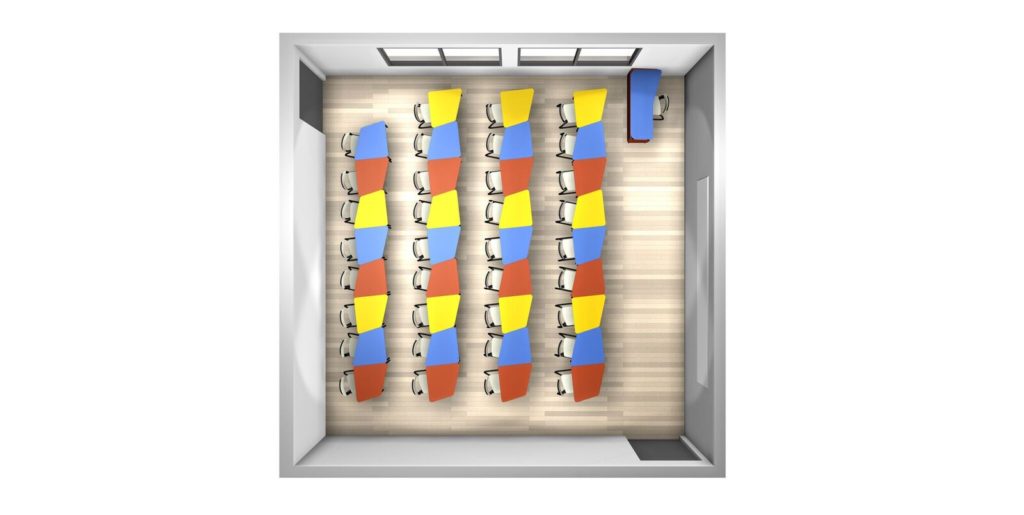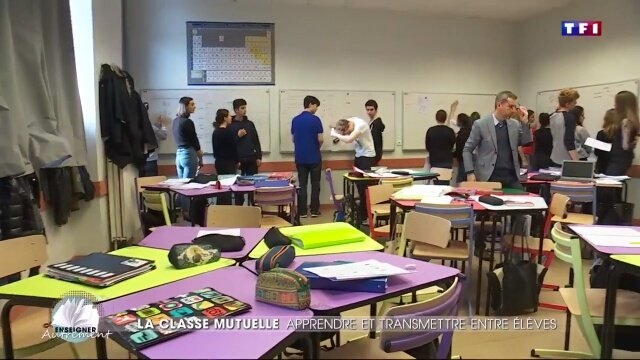New teaching methods are ushering in a rethink of the ergonomics of tomorrow’s classrooms. At one point, the priority was to kit them out with modern equipment and digital solutions. Today, it is all about engaging the class, helping each pupil learn better according to their own abilities and about creating the best learning conditions. To adapt to these new teaching methods, flexible furniture, such as the 3.4.5 stools, tables and chairs, will have to be introduced into the classrooms.

New priorities in classroom design
Pupil/teacher interaction is no longer compatible with the furniture layout of a traditional classroom. A teacher standing in front of the class in “lecturing” mode is a long way from “active teaching”. The pupil learns and understands better when they are more active, whether working independently or in groups.
The idea of setting up a flexible classroom, thanks to modular furniture, has managed to win over the actors and decision-makers in schools. There is a general realisation that teaching must be fun and dispensed in an environment where the pupil can learn and pro-actively build on their knowledge.
Classroom ergonomics is one of the new priorities in any decision to rearrange a school environment. The whole point is to make students and pupils want to affirm their personalities, and especially to be active during the learning process.
The basic configurations required to design classrooms have been established according to the actual expectations and needs of the users: pupils and teachers.
New flexible furniture for a classroom conducive to academic success

>Any process of designing a flexible classroom must meet a fundamental objective for the pupil: academic success. To do this, the flexible furniture for tomorrow’s classrooms must:
>
- foster the well-being and learning of the pupil, guarantee their safety by respecting the standards in force
- give them free access to various specialised and quality learning equipment (books, digital equipment, etc.) so that they can conduct research and discover independently
- give them access to an ergonomic classroom to work alone or in a group, discuss, question, encourage or support their classmates. This is the main advantage of the program 3.4.5
- make it easier for the teacher to organise all types of group work, as part of a didactic instruction and knowledge sharing.
Flexible furniture in a school environment paves the way for a new era in learning experiences. Thanks to its secure elements, which can be easily moved, the classroom also becomes a flexible space to accommodate the needs of various school activities.
A modular classroomis not only laid out to be a place of participatory and fun learning for the pupil, but also a living environment. Each element that makes up the modular equipment has been designed to optimise the space available for working, reading, personal study or group activities. This modular style of school furniture represents the solution of the future that can be rolled out today.
